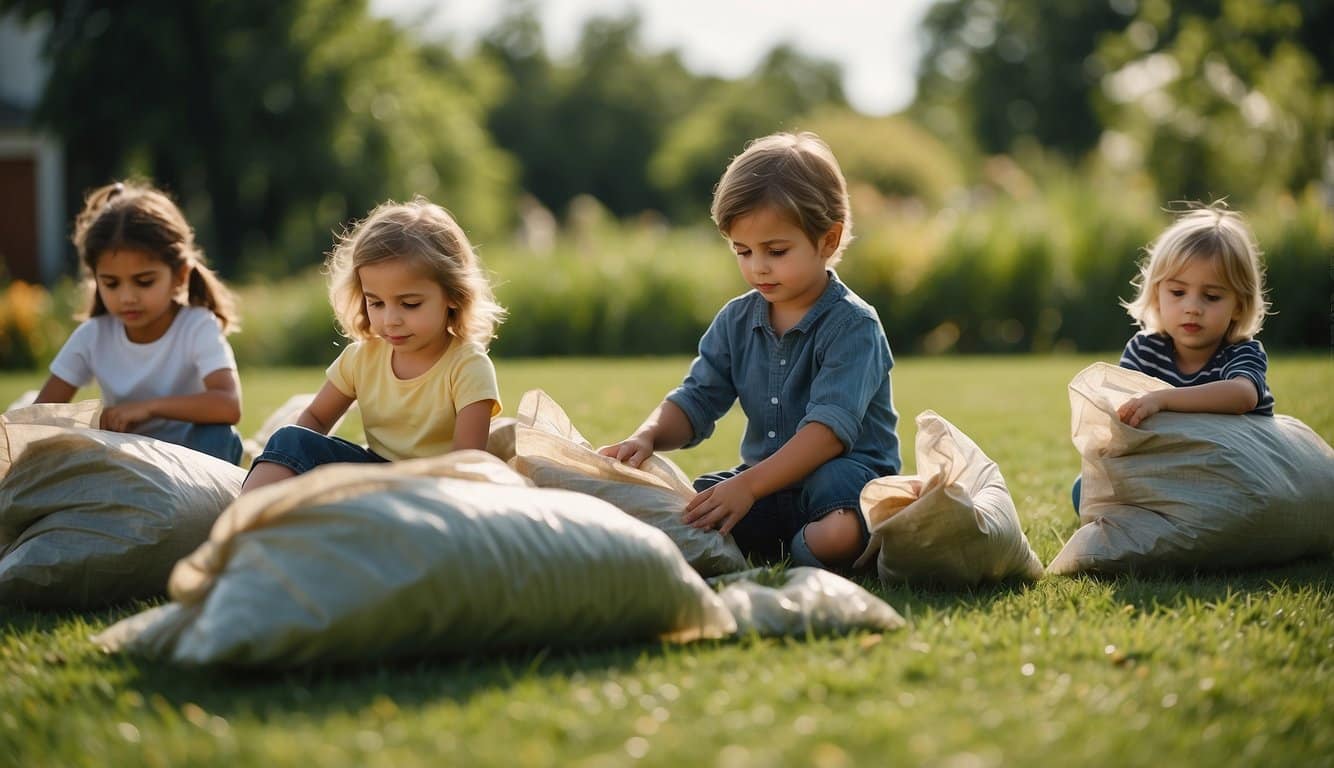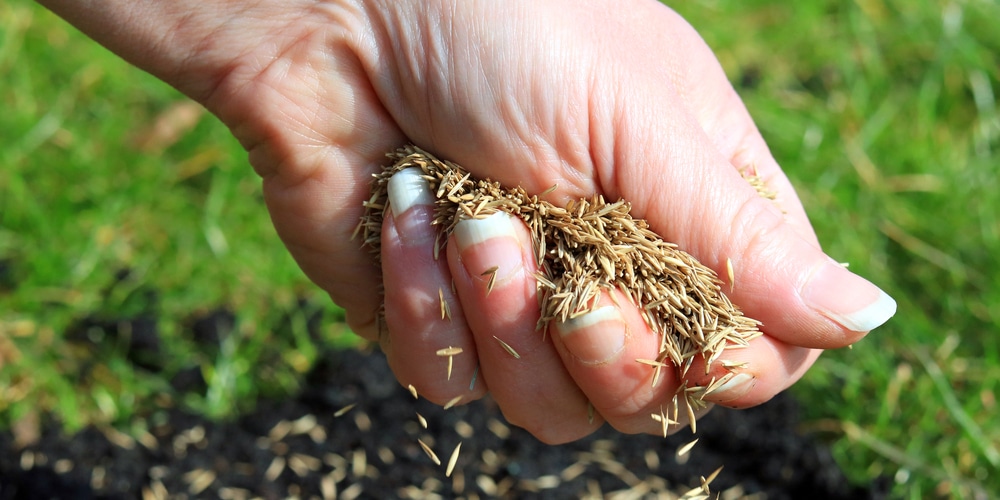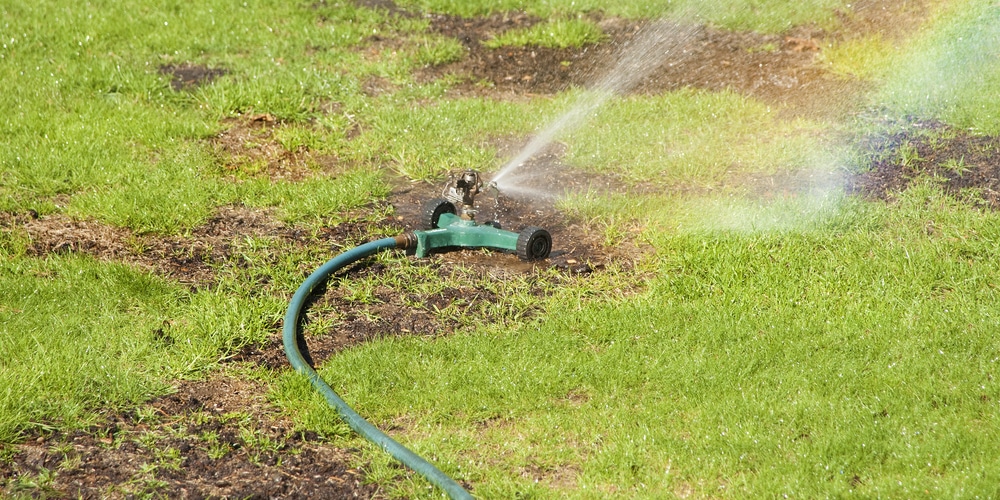Lawn Safety for Children
Before you set your children free to romp in the yard, it’s crucial to consider the elements of your lawn that contribute to their safety.
This includes a particular focus on the types of grass seed used and the potential risks associated with lawn care.
Importance of Selecting Safe Grass Seed
- Soft-textured Grasses: Opt for soft-textured grasses that are gentle on children’s skin and reduce the risk of scrapes and irritation during play.
- Drought-resistant Varieties: These reduce the need for frequent maintenance that can make the lawn a no-go zone, ensuring it’s safe and available for play more often.
Potential Hazards of Improper Lawn Care
- Chemicals: Fertilizers and pesticides can be harmful if children are exposed to them through skin contact or inhalation.
- Debris: Unattended lawn care can lead to the scattering of rocks and sticks, which can become dangerous projectiles during mowing or cause tripping accidents.
Choosing the Right Grass Seed
When selecting grass seed for areas where children play, it’s important to prioritize non-toxic varieties and consider potential allergens. This ensures a safe and healthy environment for your family’s outdoor fun.
Non-Toxic Grass Varieties for Play Areas
- Soft and Safe: Seek grass types known for their soft blades to prevent scratches and irritation during play. Fine fescue and Kentucky bluegrass are excellent choices for a velvety green carpet that’s gentle on delicate skin.
- Hardy and Durable: Opt for grasses that can withstand heavy foot traffic without a significant amount of wear and tear. Tall fescue is known for its resilience, making it ideal for areas frequented by active children.
Factors to mull over when choosing grass seed for play areas include:
- Growth Habit: Choose a grass type that grows densely and robustly, reducing the likelihood of weeds that could be harmful when touched or ingested.
- Maintenance: A grass variety that requires minimal chemical treatments is preferable to limit exposure to potentially hazardous substances.
Grass Seed Allergens and Children’s Health
When picking grass seed, consider the following to diminish allergy risks:
- Low-Pollen Varieties: Some grasses produce less pollen, which is a common trigger for allergies. For instance, Buffalo grass is a good option for those with sensitivities.
- Mowing Frequency: Keep your lawn mowed regularly to prevent grasses from flowering, which can reduce airborne allergens.
Grass Seed Application and Maintenance
When applying grass seed to your lawn, it’s important to schedule seeding with children’s safety in mind, and to use methods that minimize risks during treatment.
Scheduling Grass Seeding and Child Access
- Timing Is Key: Conduct seeding activities when children are less likely to use the lawn, such as during school hours or days out.
- Access Restrictions: Erect temporary barriers or mark off freshly seeded areas to prevent access, ensuring the seeds have time to settle and grow undisturbed.
Methods to Safeguard Children During Lawn Treatment
- Non-Toxic Products: Choose grass seeds and fertilizers that are non-toxic to reduce health risks to children.
- Clear Instructions: Leave visible signs or instructions around treated areas so everyone knows to keep off until it’s safe.
Child-Friendly Lawn Alternatives
When crafting a play area for your children, considering lawn alternatives can lead to safer and more sustainable choices. Here are some options that provide the enjoyment of a traditional lawn without the maintenance:
- Organic Lawn Solutions: A mixture of vinegar, water, and dish soap can serve as an effective weed killer that’s less harsh than chemical options. Use this natural solution to maintain an organic lawn that’s safe for kids to play on. For more instructions on creating this mixture, see Green Child Magazine’s guide on organic lawns.
- Ground Cover Plants:
- Thyme: Plant low-growing creeping thyme as an alternative to grass. It’s durable and suitable for high-traffic play areas. Learn more about using thyme as a grass alternative.
- Moss: Ideal for shady and acidic soil conditions, moss is a low lying plant that creates a soft, sustainable lawn substitute.
- Mulches for Play Areas: Utilize either wood mulch or rubber mulch made from recycled rubber. These materials provide a cushioned surface, reducing injury risks during play. Rubber mulch is particularly durable and often used in playgrounds.
- No-Mow Grasses: Consider planting fine fescue blends that require less water and fertilizer. These grasses can be left uncut, forming natural, wavy mounds. Check out options for no-mow grass varieties suited for play areas.
Frequently Asked Questions
When it comes to children and lawn safety, knowing the specifics on how to handle grass seed is crucial. Here are the answers to some common questions you might have.
What precautions should be taken to ensure children’s safety around newly seeded lawns?
- Keep play areas off-limits until the lawn has established to prevent ingestion of seeds and chemicals.
- Clear signage can alert everyone that the area is under maintenance and should not be accessed.
How long after seeding a lawn should children be kept away?
- Generally, keep children off the lawn for at least a month, or until the grass has been mowed a few times, which signifies strong root development.
- Specific recommendations may vary, so always refer to the seed package instructions for the best timeline.
Are there specific types of grass seed that are safer for areas frequented by children?
- Opt for organic or natural grass seed products without chemical coatings for a safer environment.
- Research grass seed varieties that are durable and non-toxic, such as Kentucky bluegrass or fescue.
What measures can be adopted to protect grass seed from children during the germination period?
- Temporarily fence off the area to prevent entry, using visual barriers if necessary.
- Combine grass seed with soil or use a light mulch to cover it, which also aids germination and reduces the chance of seeds being picked up or eaten.
How soon after applying lawn fertilizer is it safe for children to play on the grass?
- Wait until the product has been watered in and the lawn is dry, typically 24 to 48 hours after application, but always check the fertilizer label for specific directions.
What are the best practices for overseeing lawns in areas used by children?
- Schedule overseeding during less active seasons, such as early fall, to minimize impact on playtime.
- Ensure proper overseeding coverage for a dense, even lawn by following the recommended reseeded lawn rate.
Last update on 2025-06-06 / Affiliate links / Images from Amazon Product Advertising API





